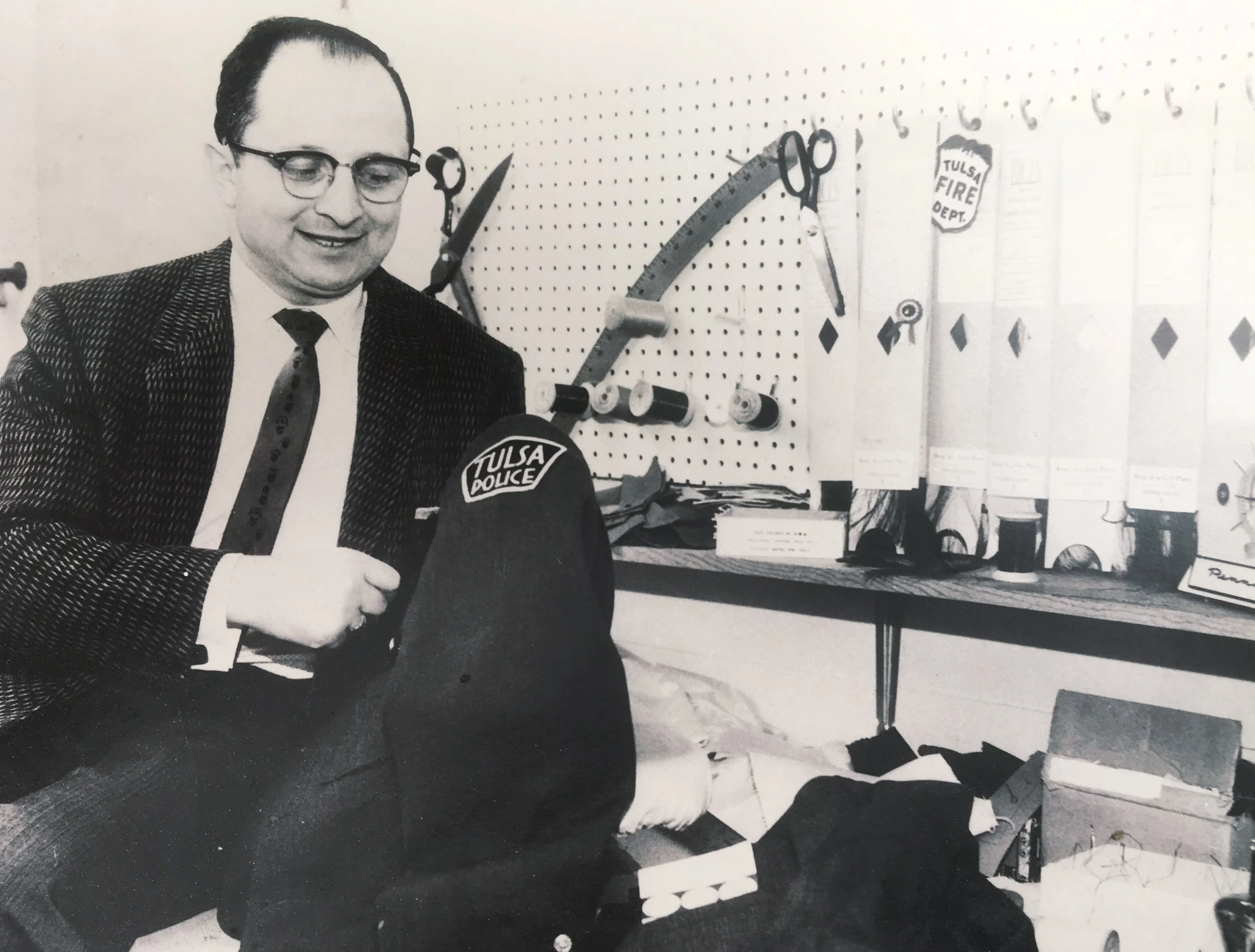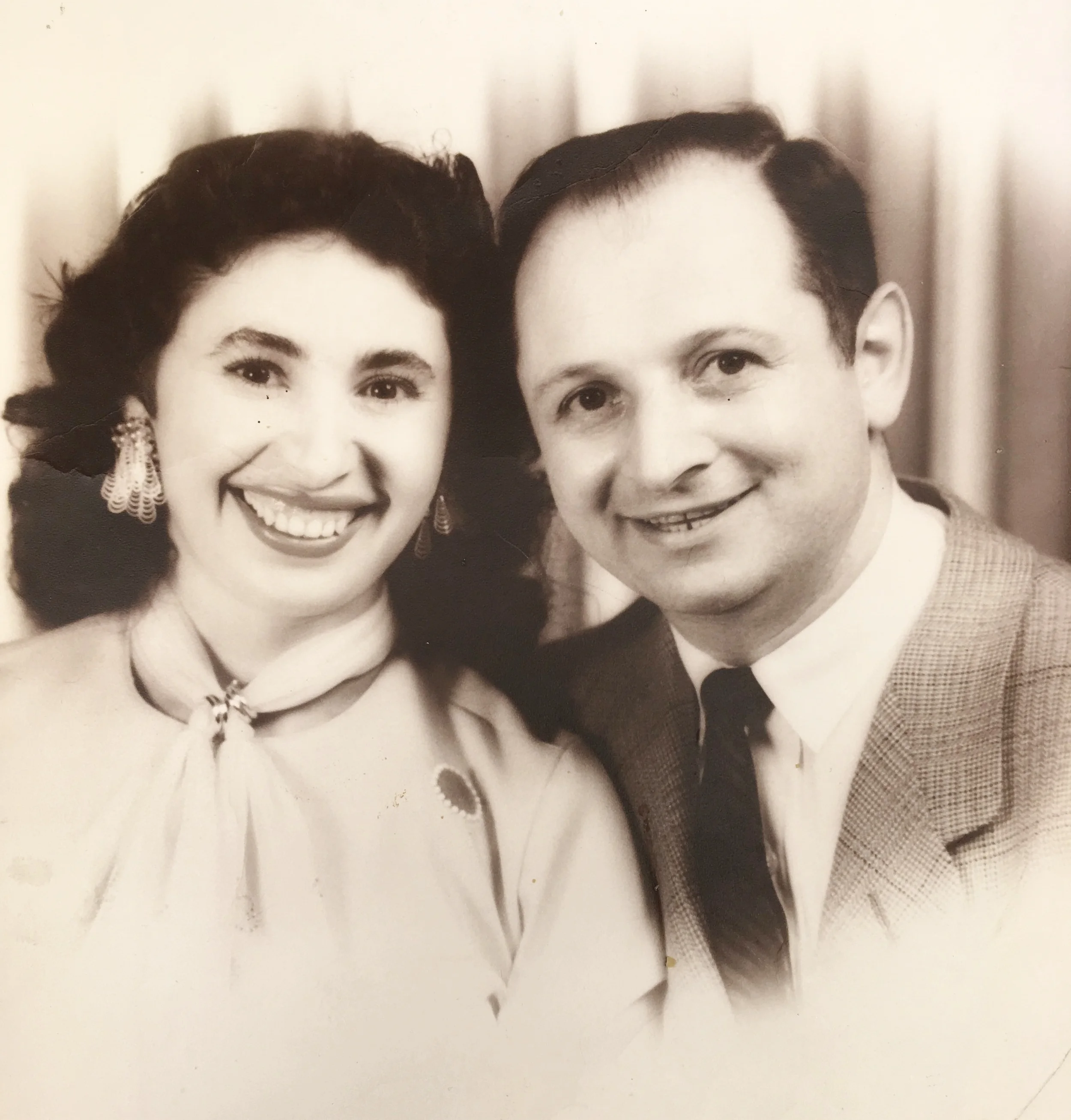The Little Polish Tailor: From Auschwitz to Oklahoma
The bird almost looks like it flutters when Mr. Ray flexes his fingers. Etched into the middle of his left forearm, suspended over top of a fainter tattoo of faded ink and vivid memories.
As the needle slides through to the other side of the woolen jacket cuff he’s holding, I think about how he spends his days; always working with his hands. As he reaches for this or picks up that, I imagine what the little bird’s wings discreetly cover. I think about how long he’s lived and how he got here.
If you ask him, he’ll tell you. He explains it simply, in the same words his father used; if you have a skill, you’ll survive. And survive he has.
Mr. Ray, ‘the little polish tailor’ he dubs himself, is in fact the only survivor of his family. His father taught him the trade he still utilizes every day; the art of clothing construction. Mr. Ray’s art narrowly guided him through an unimaginable war and two prison camps long before the plains of Oklahoma were on his horizon. By the time he arrived in Auschwitz, his siblings and parents were already gone. With his craft as his only protection, Mr. Ray continued his work tailoring military uniforms, whiling the cold days away, needle and thimble in hand.
He remembers the day it ended and remembers carrying his father’s words forward with him as his new freedom gave way to new opportunity, but only for those who were employable.
Twenty-six families of survivors traveled together the day Mr. Ray found his way to Oklahoma City where trained tailors were sorely needed. Once more his craft provided, making him nearly $100 a week in 1954, enough to provide for his young wife and himself as they made their new home in the heart of America.
Mr. Sherman Ray came to America as a refugee after World Word II and is pictured here with his wife in 1954.
Over the years his business has always soldiered on, from Oklahoma City to Tulsa, surviving as he knew it would. At 97, his heart is still deeply invested in the trade that saved his life as he sits in the shop bearing his name at the corner of 31st and Harvard. Next to him there sits a little wooden stool where I’ve taken to listening, when he’s in the mood to share about his past or present. There are so few left in the trade that I’m lucky for every second this master tailor lets me perch here and badger him about forgotten but still essential techniques in our shared art. Though one can learn many things in our modern world by typing them into a search box, Youtube doesn’t hold a candle to Mr. Ray when it comes to lowering a suit jacket collar.
Let’s rewind, how did I end up at Mr. Ray’s? I used to have a normal job. A job that people expected me to show up at every morning and that ended when I left each night. But that wasn’t always the case.
I grew up a creative. A maker. A builder. A welder. And eventually, a sewist. I always figured someday I’d find my way back to that life again.
After 6 years as a military wife, my husband and I relocated to Tulsa from our last station at Ft. Sill, in southern Oklahoma. We moved into a little place on 31st just down the street from Mr. Ray’s shop.
With an expensive and albeit so far largely unused degree in Apparel Design and Development, my sewing machine traveled with us from military base to military base but we only ever stayed long enough for me to make my husband a few shirts.
Now, as a permanent resident for the first time in my adult life, I drove by Mr. Ray’s awning every day wondering if the time had come to make the leap and start stitching together a sewing business.
Every day I vowed I’d go in to meet him. The man with an incredible reputation in this new-to-me city whom I’d heard so much about. And every day I drove by and continued on to my normal job.
But then word got out that I knew how to sew. And well-intentioned friends started to guide those in need of a little tailoring and some alterations my way. They called and texted and piled on until that normal job’s demands got harder to meet and my emotional quota became met every night and every lunch break that I snuck home to cut the hem off an obscure vintage dress and insert it into a side panel so my latest client would be uniquely well dressed for a wedding that weekend.
The day I left that normal job, the first place I went was Mr. Ray’s.
I finally crossed the threshold and barely introduced myself before asking “Could I just watch you for a while?”
He didn’t know me. He didn’t know (or presumably care) why I was there. But he didn’t miss a beat when he responded, “It’ll take a lifetime to learn.”
So I pulled up my stool and our visits began.
I try to catch him in the mornings when the shop is quiet. I come in with my coffee, take up my perch, and bring him things as he asks for them, maybe a needle or silk button thread, or fill the water dish for his tailor’s sponge used in dampening and pressing the woolen suits he’s working on that day.
I watch and pester him with questions and he launches into his usual shpeel, “You don’t want to get into this business. I only say this because I care about you. Don’t get into this business.” But if I nod and agree and just sit quietly long enough, that’s when I get the good stuff…
“Open this drawer” he says. “I have a tool I want you to see.” It’s an exquisite and impossible to find piece of hardware. A steel and bronze buttonhole press with various blades and keyhole punches, all aligned on different knobs to turn and adjust to create just the right size cut for the job. There’s a reason it’s so hard to find. It was made in Germany. In a time when the United States was not receiving imports from Germany.
He holds the tool and turns the dials and I watch the bird’s wings flutter again.
Sewing allowed him to survive and the tattoo covers the reason he does.
The German-made buttonhole press hanging amongst old photos and skeins of waxed hand sewing thread on Mr. Ray’s shop wall.
As a budding tailoress with a mere 15 years under my belt, I am painfully aware that I know virtually nothing when I watch his fingers slowly feel their way along the shoulder seam, mapping out the alteration needed for this particular suit and this particular client.
This assessment is one of the many reasons I keep coming so I lean a little closer and I ask him; how to lower that collar… how to shorten that cuff... how to take in the seat of that pant.
The answer is always the same.
“With my hands” he says.
But that doesn’t ever answer my questions.
For a while I thought this was a facetious answer as he begins each visit trying to convince me to go into another trade, telling me to do something useful like become a nurse or a teacher. “I say this because I care about you. Don’t do this.” I tell him the die is cast, I’m too far gone, so he’ll just have to show me.
Begrudgingly and thoughtfully he will eventually give in but never through words, only ever with his hands. That’s the trick with this craft “You’ll never learn by watching, you just have to do it” he warns.
And finally I understand his answer.
There are no tricks, no shortcuts, no google search that will make a master tailor overnight. I ask him questions as if I hope he’ll spit out a clear, concise wikipage response, but the only true answer is that in the end you’ll have to dig deep, spend the time and just do the work ‘with your hands’.
‘That is all for today.’ He says it as if class is dismissed, acknowledging that I’m here to learn whether he likes it or not. ‘Maybe I could come by again?’ I ask, anxious not to lose this living link to our dying art. I can see every year he’s earned around his squinting eyes when he concedes, ‘Ok’.



